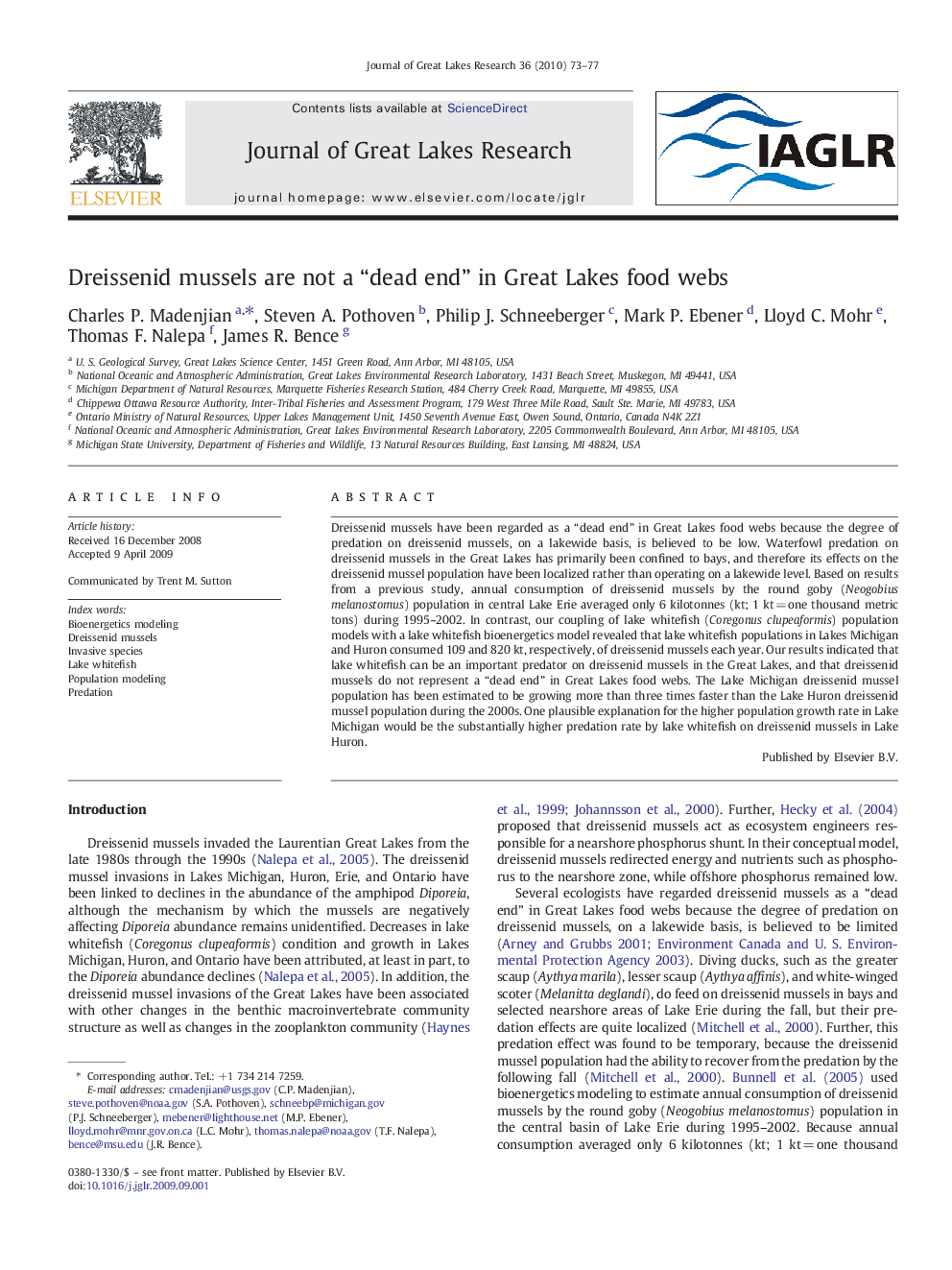| کد مقاله | کد نشریه | سال انتشار | مقاله انگلیسی | نسخه تمام متن |
|---|---|---|---|---|
| 4398534 | 1306694 | 2010 | 5 صفحه PDF | دانلود رایگان |

Dreissenid mussels have been regarded as a “dead end” in Great Lakes food webs because the degree of predation on dreissenid mussels, on a lakewide basis, is believed to be low. Waterfowl predation on dreissenid mussels in the Great Lakes has primarily been confined to bays, and therefore its effects on the dreissenid mussel population have been localized rather than operating on a lakewide level. Based on results from a previous study, annual consumption of dreissenid mussels by the round goby (Neogobius melanostomus) population in central Lake Erie averaged only 6 kilotonnes (kt; 1 kt = one thousand metric tons) during 1995–2002. In contrast, our coupling of lake whitefish (Coregonus clupeaformis) population models with a lake whitefish bioenergetics model revealed that lake whitefish populations in Lakes Michigan and Huron consumed 109 and 820 kt, respectively, of dreissenid mussels each year. Our results indicated that lake whitefish can be an important predator on dreissenid mussels in the Great Lakes, and that dreissenid mussels do not represent a “dead end” in Great Lakes food webs. The Lake Michigan dreissenid mussel population has been estimated to be growing more than three times faster than the Lake Huron dreissenid mussel population during the 2000s. One plausible explanation for the higher population growth rate in Lake Michigan would be the substantially higher predation rate by lake whitefish on dreissenid mussels in Lake Huron.
Journal: Journal of Great Lakes Research - Volume 36, Supplement 1, 2010, Pages 73–77